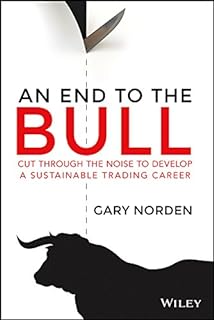elliot.baker.eb
Junior member
- Messages
- 21
- Likes
- 1
I really want to get into spread betting and I'm desperate to talk to someone about it. I'm just going to list my questions/observations here and people can answer if they wish...I've read some books, awareness of the basics etc, started demo trading about a week/2 weeks ago.
1. Do chart patterns like triangles, support/resistance lines etc. apply equally validly to all types of instruments, e.g. forex/stocks etc.? If so, why would anyone care what they were trading/betting on? If all that matters is the pattern on the screen, who cares if it's Microsoft or GBP/EUR or Soy beans? Discuss.
2. Are there statistics out there about the historical success rates of trading purely on chart patterns such as triangles, breaking through support etc.? Presumably they can't be more than 51% correct otherwise someone would just trade purely on patterns and have all the money in the world now?
3. What do you call the different time scales of trading?
Do most people stick to one time scale, e.g. intra-day (sub 4 hours), around a day - 2 days, a week, a few weeks, weeks - months? I can see pro's and cons to all time scales - can anyone recommend a particular book which might discuss time scales specifically?
Do different time scale traders have different pip targets? e.g. 10-100 in day trade? 500-1000 in a month long movement?
That's all for now. Any advice/book recommendations welcome.
Many thanks to anyone who takes their time to respond.
1. Do chart patterns like triangles, support/resistance lines etc. apply equally validly to all types of instruments, e.g. forex/stocks etc.? If so, why would anyone care what they were trading/betting on? If all that matters is the pattern on the screen, who cares if it's Microsoft or GBP/EUR or Soy beans? Discuss.
2. Are there statistics out there about the historical success rates of trading purely on chart patterns such as triangles, breaking through support etc.? Presumably they can't be more than 51% correct otherwise someone would just trade purely on patterns and have all the money in the world now?
3. What do you call the different time scales of trading?
Do most people stick to one time scale, e.g. intra-day (sub 4 hours), around a day - 2 days, a week, a few weeks, weeks - months? I can see pro's and cons to all time scales - can anyone recommend a particular book which might discuss time scales specifically?
Do different time scale traders have different pip targets? e.g. 10-100 in day trade? 500-1000 in a month long movement?
That's all for now. Any advice/book recommendations welcome.
Many thanks to anyone who takes their time to respond.

